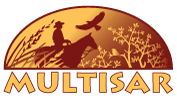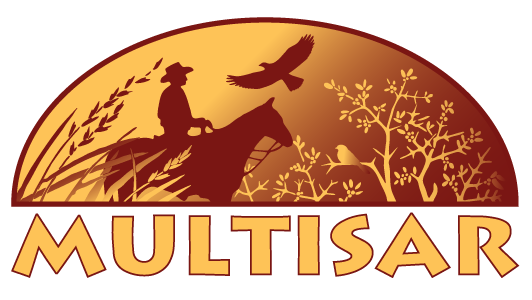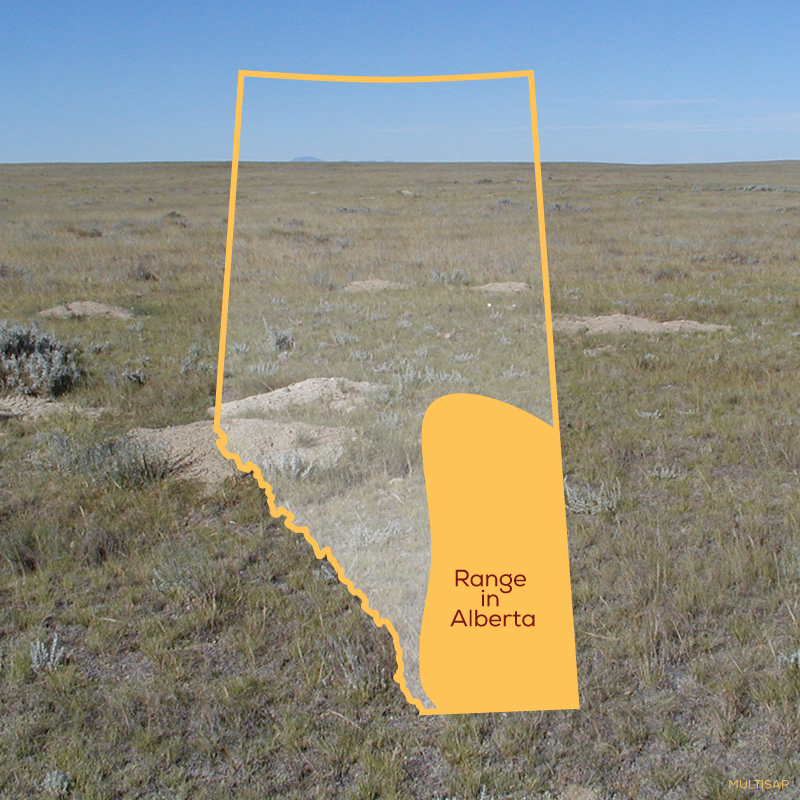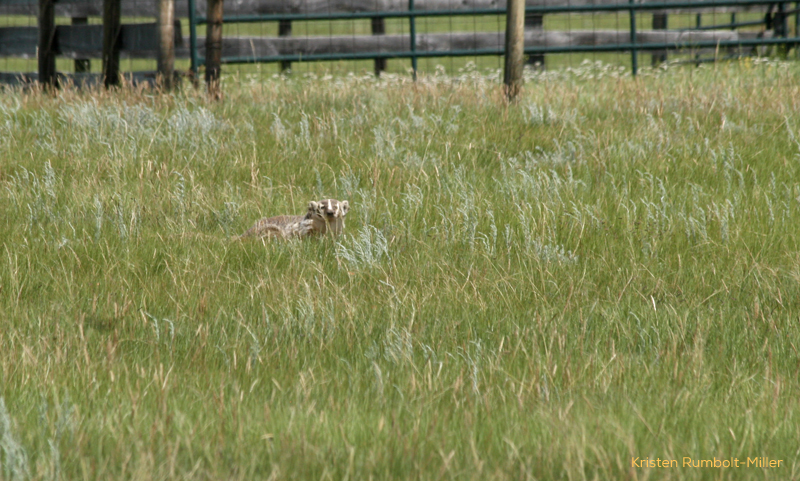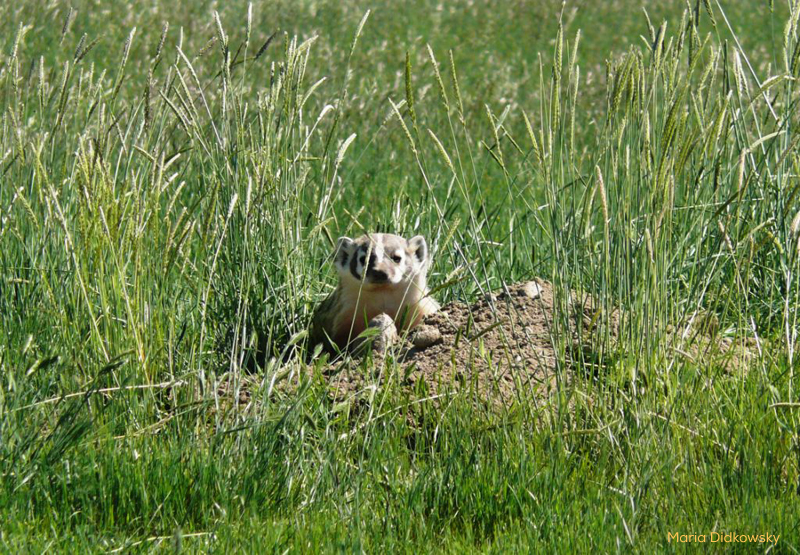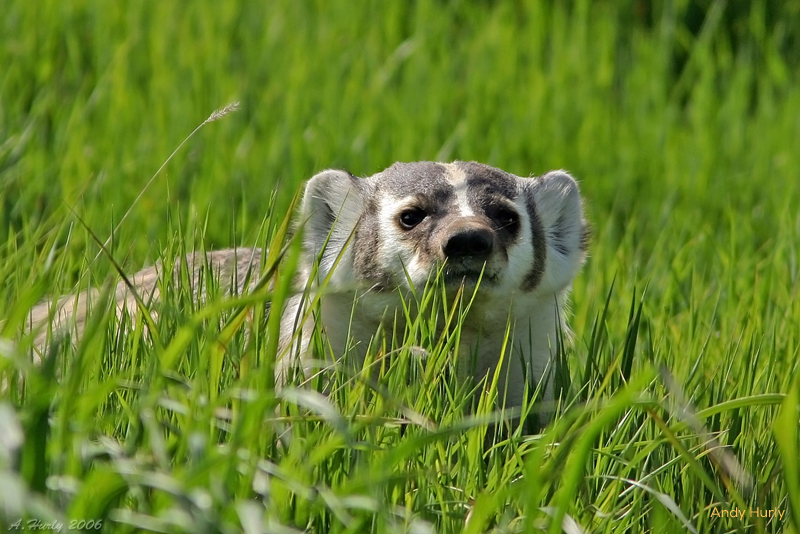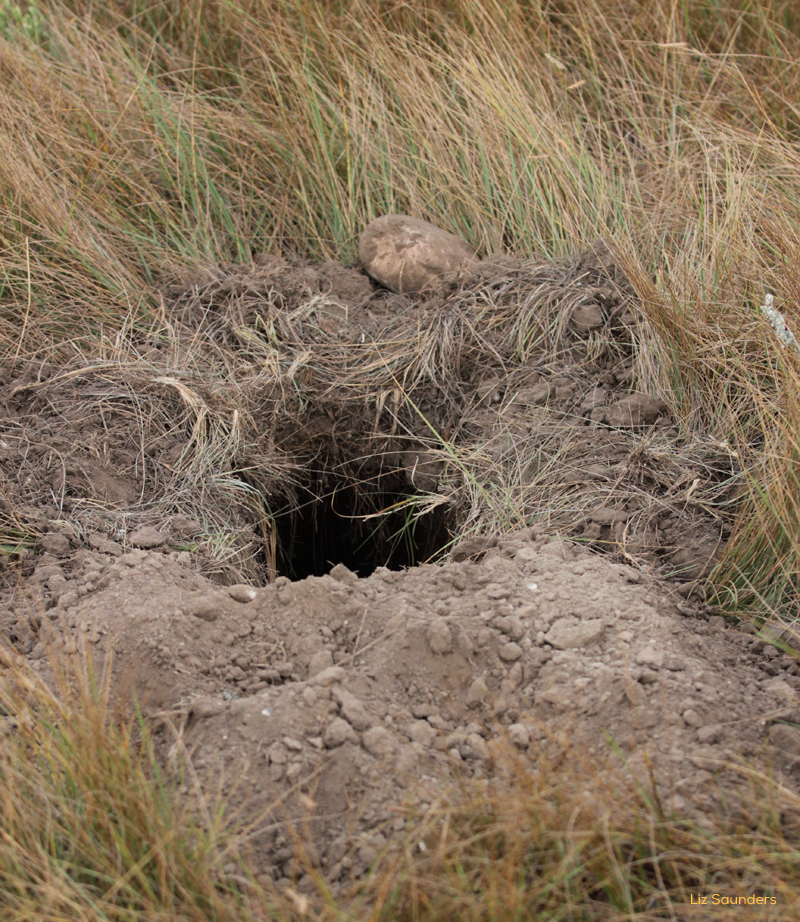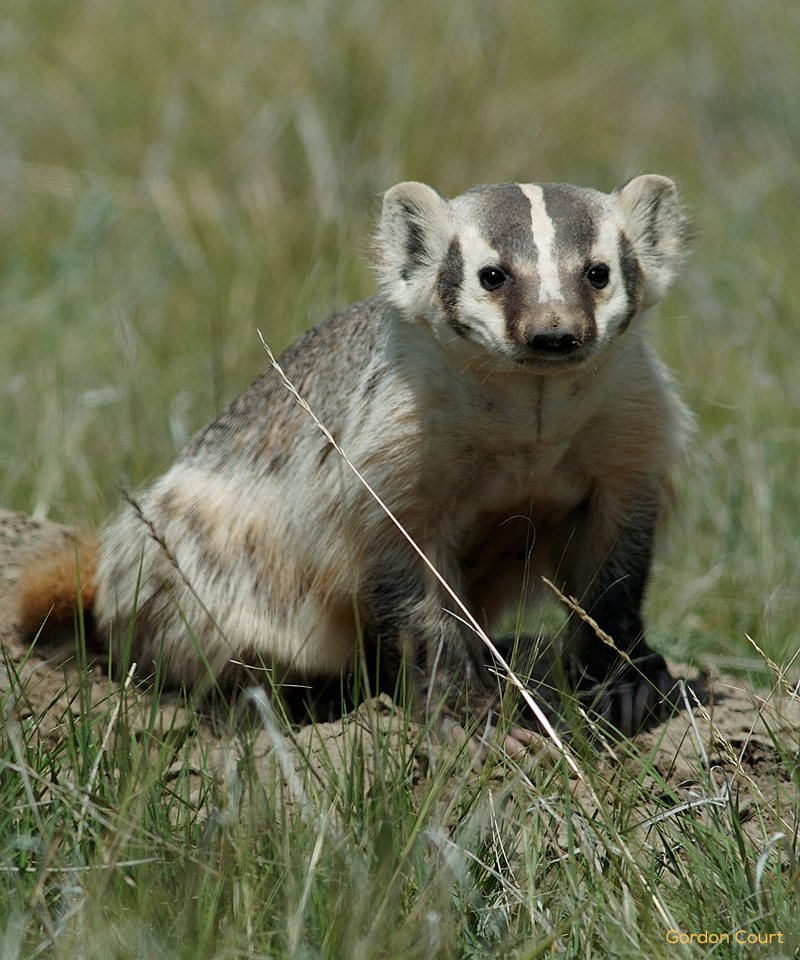Digging Machines
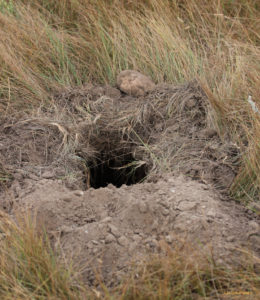
Badgers are expert diggers and can excavate large burrows.
American Badgers are powerful diggers. Their thick, strong front legs and long front claws (up to 5 cm long!) can excavate a burrow extremely quickly, even when the ground is frozen. They dig burrows for daytime resting, raising their young and to find prey.
Burrowing for Dinner
In Alberta, the American Badger’s main food sources are Richardson’s Ground Squirrels and Northern Pocket Gophers. In winter, they dig out ground squirrel burrows to find hibernating squirrels. Badgers will also eat an array of other items such as insects, birds, eggs, frogs, toads and snakes.
Benefits of Burrows
The numerous burrows dug by badgers play an important role in the prairie ecosystem. A variety of other animals use abandoned badger burrows, including Species at Risk, such as the Burrowing Owl, Swift Fox and Prairie Rattlesnake. As such, they are considered a “keystone species”. Burrowing also aerates the soil, improves water movement through soil layers and promotes the formation of organic matter.
Solitary and Nocturnal
American Badgers live solitary lives. Adults live alone and young badgers disperse from their litters when they are 3-4 months old. They have large home ranges and often only stay in one area for a few days before moving on. They are active primarily at night, spending the days underground.
Population
Badgers were trapped in large numbers for their pelts in the late 1800s and early 1900s. This reduced badger populations and extirpated them from some parts of Alberta. In 2002 it was estimated that there were between 1,000 and 10,000 badgers in Alberta. This is a significant reduction from 1928 when over 18,000 pelts were harvested. Their population is likely still decreasing overall, although may be increasing in some areas.
Current Threats
- Reduction in available prey, both due to habitat loss and human control of rodents, especially Richardson’s Ground Squirrels.
- Loss of native prairie habitats (although badgers will sometimes use agricultural areas).
- Human control of badgers by trapping, shooting and poisoning because of the nuisance created by their burrows.
- Increase in roads and human activity which has led to an increase in the number of badgers hit by vehicles.
- High fur prices can increase the number of badgers trapped for their pelts.
Species@Risk Quiz
Test your knowledge about Alberta’s grassland species at risk
American Badger
Question 1 |
Badgers and the burrows they dig help to improve prairie soils by:
Increasing water transfer between soil layers | |
Promoting the formation of organic matter | |
Aerating the soil | |
All of the above |
Question 2 |
The badger’s primary food source in Alberta is:
Grasshoppers and earthworms | |
Richardson’s Ground Squirrels and Northern Pocket Gophers | |
Birds and frogs |
Question 3 |
Badgers dig burrows that are used by:
Burrowing Owls | |
Swift Foxes | |
Prairie Rattlesnakes | |
All of the above |
Question 4 |
In the winter, American Badgers:
Go into full hibernation in their burrows | |
Migrate to the southern USA | |
Feed on hibernating Ground Squirrels during warm periods |
Public
- Drive carefully at night in rural areas where badgers live to reduce road mortality.
- Support native grassland habitat by choosing grass-fed meat in the grocery store.
- Voice your support for native grassland conservation with your political leaders.
- Educate yourselves and your family about American Badgers and their key role in the grassland ecosystem.
Landowners
- Hang on to your native grasslands and keep them healthy.
- Tolerate ground squirrels and badgers if they are not causing excessive damage, especially on marginally productive land.
- Remember that badger holes provide necessary habitat for species at risk such as the Burrowing Owl, the Swift Fox, Prairie Rattlesnake and even pollinators such as bumble bees!
- Refrain from using poisons to control ground squirrels, as they will kill badgers as well, both directly and indirectly if a badger ingests a poisoned squirrel.
- Consider the fact that when a badger moves in to an area, they can remove up to 50% of the ground squirrel population for you! As well as consuming hibernating squirrels, they also forage on litters of squirrels in their nests and go a long way towards reducing squirrel populations in an ecological way.
- Where badgers have created large holes in a pasture over the winter, consider filling them in to reduce the potential for livestock harm.
- Consider restoring some of your degraded grasslands or marginal croplands to native vegetation typical of your area.
- Talk to your children and neighbours about the privilege of having American Badgers on your land.
What MULTISAR Does
- Provides information about American Badgers, their role in the ecosystem and importance to Species at Risk.
- Cooperates with landowners to restore cropland to native grassland at appropriate locations.
- Develops Habitat Conservation Strategies in collaboration with ranchers to balance the needs of Species at Risk and sustainable ranching in the Grassland region.
